
by AmyPlano | Jun 27, 2019 | General information about PCOS, PCOS Breakfast Foods, PCOS snacks
Who the heck does not like yogurt ? After all the possibilities for its use are endless! It can be used as a base in parfaits, smoothies, soups, pancakes, and can even pinch-hit for sour cream. It is rich in protein and calcium and also contains potassium which is important for ♥ health. Yogurt also contains live, active bacteria cultures. These active bacteria cultures are also known as probiotics and are great for maintaining a healthy gut and digestive system. However, with so many choices choosing the best yogurt can be challenging to say the least!
Navigating the grocery store in search of can be tricky! Need some help grocery shopping? Check out my article on that very topic! I was in Shop Rite the other day and I kid you not – the yogurt aisle almost spans the entire length of the dairy aisle. I remember back in the day – the only two choices were Yoplait and Columbo . There were no flips, dips or cherry pie-flavored yogurts. Just the normal variety of boring flavors like vanilla, peach and strawberry.
Now a days there are SO many different options to choose from. Greek, traditional, flavored, plain, fruit filled, and varying percentages of fat are all factors to consider when buying yogurt. But what do these terms all mean? What is the best one in light of all these choices? Let’s get to the bottom of this madness asap!

What percentage fat yogurt should I buy?
This question is tough. In all honesty – it depends on your #dietarygoals are as well as your overall health.
If you have high cholesterol or are just trying to keep your calories on the low side then choose either a low-fat (1%) or fat-free (0%) variety. These two choices generally have the lowest calorie value and contain a nominal amount of saturated fat. Look for labels that have the lowest amount of saturated fat.
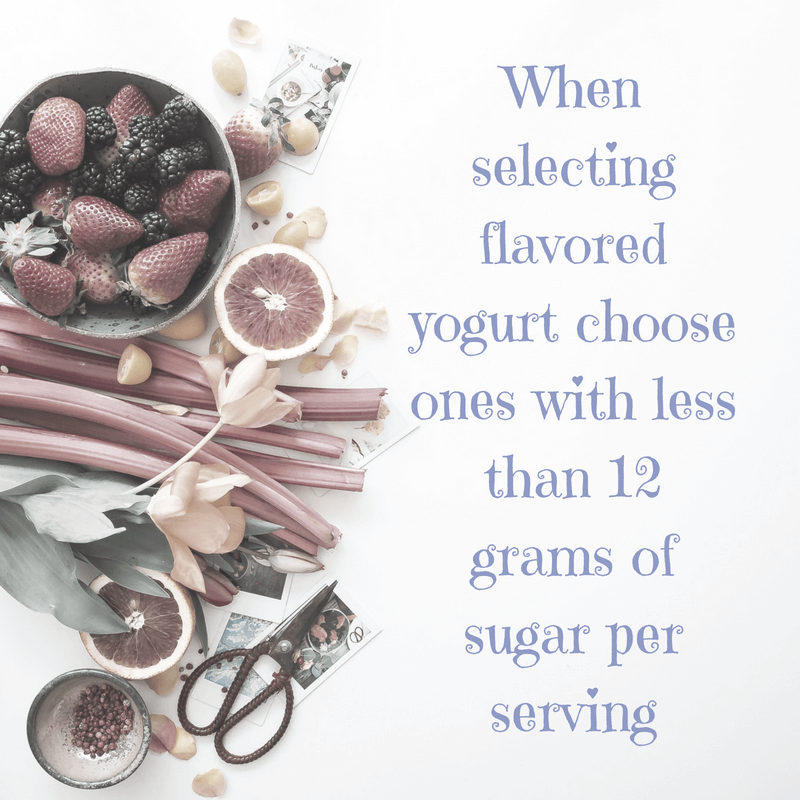
However, if your cholesterol is not an issue and you are just looking for a yogurt with a thicker consistency then opt for a 2 % or full-fat kind.
I personally prefer 2% or full-fat plain yogurt. My favorite traditional brands when I can find them (please don’t laugh 🙂 ) are YoBaby Whole Milk Plain Yogurt or Liberte Plain 2 % Yogurt. Shop Rite generally carries the YoBaby. But lately I can only find the plain Liberte yogurt at Whole Foods. The reason why I like these brands is # 1 (and most important) they taste pretty darn good ! And # 2 both brands contain under 10 grams of sugar. Also they have no added funky ingredients.
Which is best: Greek or traditional ?
Greek yogurt is strained which makes it thicker, creamier, and smoother than traditional kind. When comparing Greek and traditional yogurt, Greek has around double the protein but does have less calcium than traditional kind. Both the Greek and traditional varieties are usually well tolerated by individuals with lactose intolerance. However, the Greek type has less lactose (than traditional) and may be better tolerated than traditional yogurt. Most people prefer Greek to traditional yogurt because of the higher protein content.
Nowadays pretty much every major brand has both a traditional and a Greek yogurt. Even Chobani who started out their career just selling Greek now has a “old-fashioned non-Greek traditional smooth yogurt”. Therefore, you can be brand loyal and still get your pick of the litter!
However, please don’t fret if you just don’t love Greek yogurt! Many of my patients don’t like it and prefer the traditional style instead. Keep in mind – the average American consumes more than their daily requirement for protein. So if you opt for the non-Greek variety you will not be selling yourself short in meeting your protein needs.
Favorite Greek yogurt brands
For the Greek yogurts I personally bounce around brand wise depending upon what is on sale and has the lowest amount of sugar per serving. I shop mostly at Trader Joe’s. But unfortunately (aside from their ‘plain’ Greek) they do not carry a whole bunch of options under 10 – 12 grams of sugar. Some of the Greek style brands in my fridge now are Siggi’s Greek – 2 % Black Cherry, Fage Yogurt-2% plain, and Chobani Plain Whole-Milk Greek Yogurt.
Should I buy plain, flavored, or fruit filled yogurt?
One of the major issues with yogurt is it often has added sugars. It is made from milk (duh!) and therefore has naturally occurring sugar in it, called lactose. Thus, if you look at the nutrition label of plain yogurt, you will notice it has 12 g of carbohydrates. Since this sugar is naturally occurring, it is not of concern. However, what is concerning is the large amount of added sugars in many yogurts. A serving of flavored yogurt can contain an upward of 30 grams of sugar depending on the brand. That is a wholelata sugar! A can of soda has about 24 grams of sugar so the comparison is clear.
How to dodge the sugar
You can skip the added sugars by buying plain yogurt. Then you can be creative and add your own fruit and flavors such as cinnamon and vanilla. Hello fancy pants! You can even go nuts with different extracts such as almond, coconut or coconut to pump up the flavors without the calories or carbs.
When you buy the flavored variety, check the nutrition label and try to buy a containing less than 12 grams of sugar per serving. Some of the brands with the lowest amount of sugars including Dannon Oikos Triple Zero, Chobani Hints, and Siggi’s Greek mentioned above.

Trying to decrease your overall sugar intake? Choose plain yogurt and add your own fresh fruit #squadgoals
Navigating the yogurt aisle used to be challenging! But now, you should be able to navigate the dairy aisle with ease. Opt for low sugar yogurts that fit your dietary goals, budget and taste palate. Selecting an appropriate yogurt should now be pretty easy!
As always, if you have a question bring the nutrition label to your nutrition visit and the dietitian can review it.
What is your absolute favorite one on the market? Tell us what you think in the comments below.
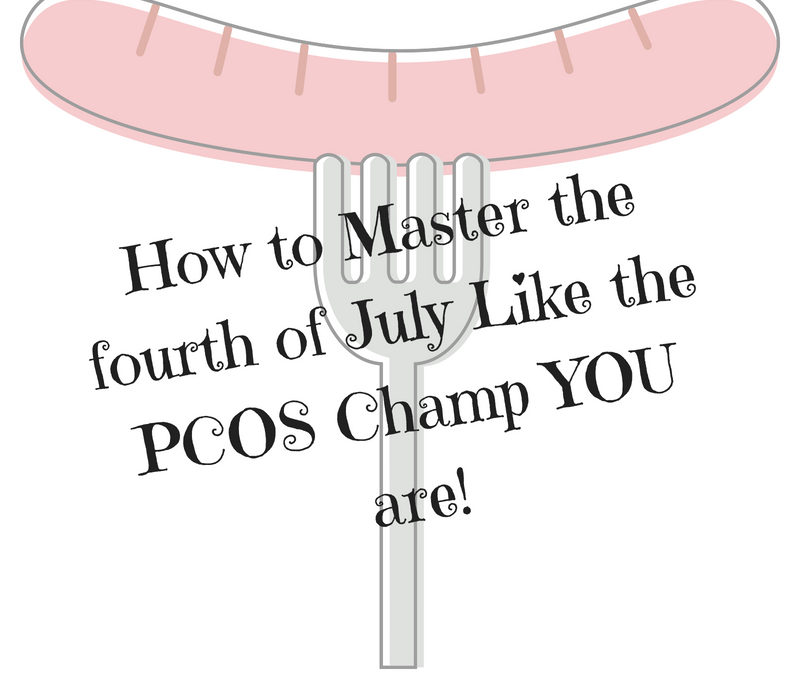
by AmyPlano | Jul 2, 2018 | General information about PCOS, PCOS friendly recipes
Between the crazy highs and unseasonably low temperatures this past week in CT (and freakish Tornadoes) it is hard to believe the fourth of July is just around the corner. However, before you know it, people will be firing up their grills and breaking out the dogs and burgers. Rather than throwing caution to the wind and deciding you’ll jump on the latest detox diet Tuesday, why not stay ahead of the game? There are plenty of ways to keep your holiday healthy, tasty and PCOS friendly for sure!
Sip Responsibly on the fourth of July
Yes – I know this a no brainer! But seriously the fourth of July seems like just like on other reason to carry on with summer drinking. As if people need a reason to drink, right? However, if you are going to imbibe then why not choose to do so responsibly.
Numero uno – avoid the carb bombs. Margaritas, frozen drinks and unfortunately the likes of craft beers tend to be very calorie and carbohydrate heavy. While Craft beers range in calories most clock in at about 200 – 250 calories per 12-ounce bottle. Thinking about knocking back 2-3? You are looking at an upward of 600 calories in alcohol alone.
Side note – back in the day when I used to bartend I would start my shift by making 5 gallon tubs of margaritas. In each batch I would put two full pounds of quick dissolve sugar! Yes – holy moley is right! Sugar rush for sure.
Instead, opt for clear spirits like vodka, gin, and rum mixed with a no/low-calorie mixer. For example, a Titos and Club Soda will only set you back about 95 calories. Plus did you know flavored vodkas (think Stoli Raspberry, Absolut Melon, Pinnacle Whipped Cream) have the same amount of calories as plain vodka? So you can even get fancy and mix a flavored vodka with a flavored club soda squeeze some lime on top and there you have your new favorite skinny summer cocktail.
Looking for the ultimate guide for alcohol and PCOS? The PCOS Dietitian has got you covered! Check out this blog and all things alcohol and PCOS.
Or if hard liquor is not your style – choose a light beer and you are only looking at about 100 calories as well. A glass of white or red wine is about 150 calories. Want to cut those those calories in half? Make yourself a wine spritzer! Fill a wine glass with crushed ice. Then pour 2-3 ounces of wine and 3-6 ounces of your favorite seltzer into a wine glass. Top with sliced fruit. Whallah!
Are the above options not really your jam? How about a low-calorie mojito? Coconut Water and Champagne Punch anyone? These low calorie cocktail from Proof are perfect for those watching their waistline. And let’s be honest – who IS NOT watching those waistlines even on the fourth of July!

Who says cocktails have to be unhealthy? Not this RD.
Photo by: Monika Grabkowska
Want more information about the calorie counts of your favorite beverages? Check out one of my recent posts on this very topic!
Pump up the Veggies
Often at picnics there are more veggies available than one might think. Sometimes you just need to do a little searching. Crudite platters, tossed salads and even the infamous toppings for burgers are all good places to get those veggies i
Are you trying to watch your carbs? Why not try a lettuce wrap instead of a bun? After all, if 5 Guys offers this option it has to be good, right? You can save yourself 200 calories and 30 grams of carbohydrates by this simple little swap.
Does the green salad look a little weak? Why not grab some of the ‘fixins’ for the burgers (think lettuce, tomato, onions) and ‘doctor’ up the salad (on your own plate, of course!) Or even better yet – offer to bring a kick-ass salad or some sort of veggie based side. Both options often require very little prep aside from assembly. This way you know you will have something to round your plate out aside from Grandma’s tuna mac salad 🙂
Don’t go Hungry
This rule holds fast for any type of celebration including the fourth of July. Never. Ever. Ever. Go to an event hungry.
I repeat. Never. Ever. Ever. Go to an event hungry.
Most of my patients head to an event like a Memorial Day picnic with the mentality they are going to save all their calories for the day for one big meal. They plan to white- knuckle it the whole day until they get to the picnic. This backfires HARD pretty much every time. As soon as they see the food they everything short of bury their face in pretty much everything and anything that is out.
Instead plan accordingly. Have a light breakfast or snack prior to the picnic. Scrambled eggs and fruit, greek yogurt with 1-2 tablespoons of granola, an apple with peanut butter or something even as small as nuts or a cheese stick will keep your hunger at bay.
I much rather see you spend more time on the ‘front end’ in preparing than leave the picnic feeling big, bloated and polluted with an underlying sense of guilt. We all know this feeling! But YOU are stronger than this. Don’t allow yourself to be defeated. Instead plan ahead like the champ you are and leave the picnic with your rock-star status intact.
Keep it Lean and and No one will be Mean
Be a lean mean grilling machine on the fourth of July. After all, nobody goes to a BBQ saying, “I cannot wait to eat super sloppy BBQ food.” If you are the grill master instead choose lean cuts of protein to throw on the coals. Your guests will thank you!
Think 93 % lean ground beef, flank steak, grilled chicken breast marinated in a little balsamic, rosemary and oil, or even a veggie burger (just watch the sodium on those puppies some brands are crazy high!)
Truth bomb – many people opt for a turkey burger thinking it is the best choice. Best as we know is a relative term. Well, it’s not a horrible choice but is it the best choice? I am not so sure.

Did you know that beef burgers and turkey burgers often contain the SAME amount of calories and fat?
Did you know a turkey burger made from “LEAN” ground turkey has just about the same amount of calories and fat (150 – 170 calories & 7 -10 grams of fat for a 4 oz. patty) as a burger made from ground sirloin (93 % lean ground beef)? Lean ground turkey is generally a mix of light and dark meat. So if you are craving a nice juicy burger but are feeling guilty about eating red meat please don’t!
The only exception from a ground turkey standpoint is when the package states “EXTRA” lean. This type of ground turkey has virtually no fat, is expensive and in my humble opinion does not taste very good. It is certainly not good for burgers on the grill. With virtually no fat the burger will be unfortunately very dry.
Be a Good Friend
From my experience as someone who loves to host parties and tells everyone NOT to bring anything – never believe the host. They lie. I love it when someone brings something. SO be that good friend and come bearing food 🙂 This is your prime opportunity to bring something healthy that everyone (including yourself) will likely enjoy.
I can’t tell you how many times my patients say, “There was nothing healthy to eat so I had to eat crap.” Really? Come on my friend. No need to be so lazy! Get off your little butt and avoid all those excuses.
Remember it does not have to be something fancy, complicated or expensive. Heck stop at Costco and grab a veggie platter for $9.99 or a simple fruit bowl (also may I add for only $9.99 at Costco). Even a big old tub of hummus with a bag of baby carrots will likely be appreciated. Pick up a whole watermelon and bring that! After all, who doesn’t like juicy watermelon? The list of healthy options you can bring are seemingly endless.

Want to step up your grame? Why not make a killer salad with everything but the kitchen sink in it? That way you can take whatever comes off the grill and and throw it on top of the salad. You will be surprised how many guests will follow suit. Because like I said, even though Memorial Day is typically synonymous with unhealthy foods, it does not have to be. More people than not are working hard to improve their health. Give people a handful of healthy options and they will thank you for it. A little effort goes a long way!
So whether or not it feels that way right now – the fourth of July is HERE. While I am by no means asking you to be a saint (what fun would that be?) – why not start the summer season on a good foot? You have worked SO hard all winter. Let’s go into summer strong!
Did you survive the fourth of July like a champ? What are your tried-and-true tips for a healthy summer holiday weekend? Leave your favorites in the comments below!
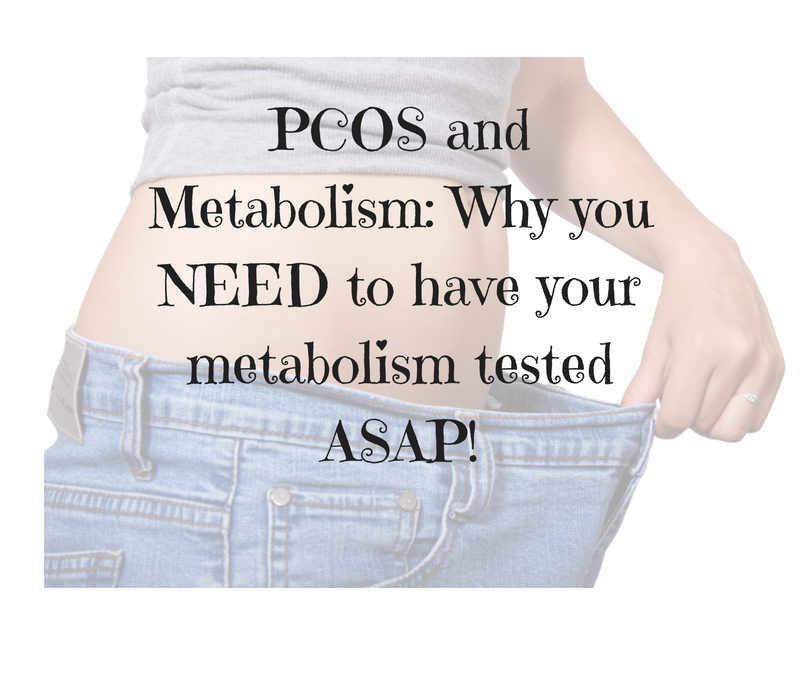
by AmyPlano | Jul 2, 2018 | General information about PCOS, PCOS and metabolism
Are you unable to lose weight in spite of vigorous exercise and a disciplined training schedule? Are you looking to maximize your performance yet feel like despite all your efforts you are failing miserably? Have you hit a plateau in your weight loss? Would you like to take the “guesswork” out of determining your calories to achieve your goals? Well if you answered “heck yes” to any of the above questions then you are likely the perfect candidate for RMR testing.
What is Metabolism
First things first, before we talk about RMR testing and why it is so friggin’ important we need to define metabolism. Did you know that even when you’re at rest, your body needs energy for its “silent” functions? These include breathing, circulating blood, adjusting hormone levels, and growing and repairing cells. The number of calories your body uses to carry out these basic functions is known as your basal metabolic rate (BMR) or more often referred to outside of a clinical setting as resting metabolic rate (RMR).
There are many factors which determine our metabolism. Some include:
Your body size and composition.
People who are larger or have more muscle burn more calories. Even at rest these folks tend to have higher RMR’s.
Your sex.
Men usually have less body fat and more muscle than do women of the same age and weight. This means men burn more calories at rest (Boo!). But don’t worry, I will be sharing some tips for how us chicks can optimize our metabolisms.
Your age.
As we get older (sigh), the amount of muscle we carry tends to decrease. Fat accounts for more of our weight, slowing down calorie burning.
[Truth bomb: If you consistently work out with weights you can help off-set some of this loss 🙂 ]
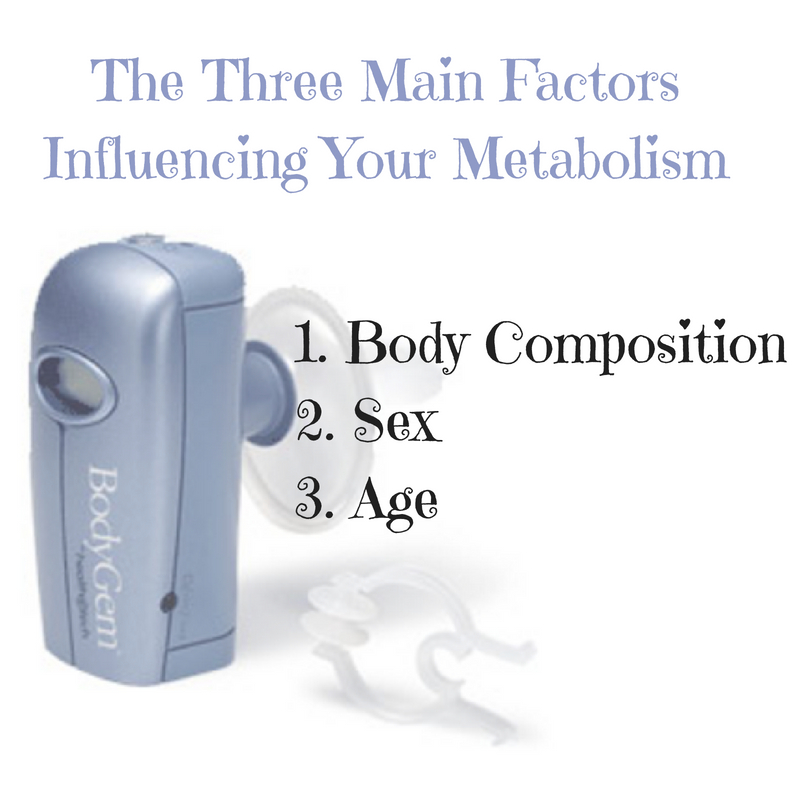
Two other important factors that determine how many calories your body burns each day:
Food processing (we call this thermogenesis!)
Did you know that digesting, absorbing, transporting and storing the food you consume also expends calories? Score! About 10 percent of the calories you burn each day come from the digestion and absorption of food and nutrients.
Physical activity
Physical activity and exercise accounts for the rest of the calories your body burns up each day. It comes as no surprise that physical activity is by far the most variable of all the factors.
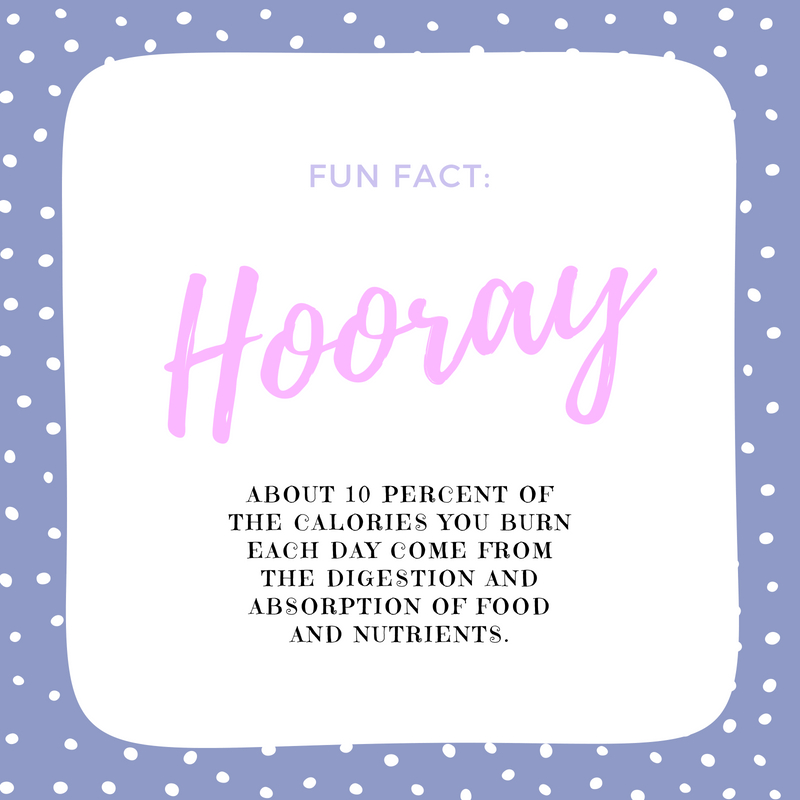
The changes in overall body mass (increase or decrease) ultimately comes down to long-term energy balance which is represented by energy in (via food) and energy out (via metabolic rate). Total energy expenditure is determined by many factors including: body composition, sex, age, thermogenesis and physical activity. Having ‘good’ genetics certainly doesn’t hurt either! So now that you are a master of ‘all terms metabolism’ let’s get down to business.
Here are my top three reasons for why getting your RMR tested is SO important to achieving your body composition and training related goals
1. Takes the guesswork out.
By having your metabolism tested by a professional you never need to ask yourself the annoying questions, “How much or little should I be eating ?!?”
How many times have you entered your height and weight into an online metabolism calculator only to get some crazy number which you have no idea how to interpret?
I cannot tell you how many times patients come into my office following a calorie level that is completely wrong for the goals they are trying to accomplish. This frustrates the heck out of me. It’s not that they are unsuccessful for lack of trying. It’s simply because they have been provided with the wrong information.
By testing your RMR you will now know the exact number of calories your body needs to accomplish your dietary and fitness related goals. There is no more guessing or even second guessing where your calories need to be! Through the use cutting edge technology we can help you determine the exact amount of calories you need to reach your goals. Headache solved!
2. Gives you an accurate baseline.
If you don’t know your baseline calorie needs how do you know if what you are doing is ‘working’?
You have got big goals which I love and admire. However, how can you accomplish your long-term goals if you don’t know where your baseline needs currently are? Testing your metabolism before you make significant changes to your exercise and/or training routine can provide you with a solid foundation in which to make adaptations. Therefore, as things like your body composition, weight and/or performance markers change over time you can adjust your calories relative to your new goals.
Independent of what our specific goals are we all need a caloric starting point. If we don’t have a baseline and we start making changes to our diet how can we tell what specific calorie level is working? Simply put – we can’t.
Therefore, by testing your RMR before making any significant dietary and/ or training changes you are armed with an accurate, reliable calorie level to base your goals on.
3. It helps you when you are stumped.
Knowing your RMR gives you clarity in those moments when no matter how hard you try – you just cannot seem to tackle your dietary and/or fitness goals.
Knowing your your RMR can be critical when you are stumped. As mentioned previously many people base their goals around a calorie level that is not in tune with their goals. Along with the headache this creates can come a massive amount of frustration. Unfortunately, if you have been there you know exactly what I am talking about 🙁
Trying to gain lean muscle mass but struggling like crazy? It could be that your calories are too low. We all know that in order to build anything we need ‘extra’ resources, right? That extra might be money, resources or time. Same goes for putting on muscle. In this case, the extra needs to be in the form of calories. Therefore, for someone aiming to put on muscle they need to FIRST make sure they are taking in enough calories to do.

On the flip side, do you feel like you are at a weight loss plateau? Are you meticulously counting calories, carbs, protein and everything under the sun and still not losing weight? Is MyFitnessPal definitely not your pal? For most people the simple answer is their calories are not in tune with their weight loss goals. It could be that their calories are too low. Or it could mean that their calories are too high. How the heck will they know unless they actually test their metabolism?
Knowing your unique RMR for the different ‘seasons’ can help optimize your nutrition during both your off-season and peak training periods. During training, you need to make sure you are taking in enough calories to support not only your training but your ideal body composition for your sport. It’s no surprise when an athlete is not taking in enough calories how quickly they feel the side effects. Unintentional weight can lead to fatigue, burnout and injury. All of these can be factors can be minimized if not avoided entirely.
Case in point – I rest my case. Plain and simple – anyone with a performance or body composition related goal should have their metabolism tested. And truth be told I don’t know a whole lot of people who don’t share these goals (especially the later!) By testing your RMR you will no longer be ‘spinning your wheels.’ The precise tools you need to determine the exact calorie level to fit your specific goals is attainable. And just like Jim Rohn’s stated, “When you know what you want and you want it bad enough, you’ll find a way to get it.”


P.S. Did you know we are running a 40 % discount on RMR testing for the month of July? Use the coupon code thisis40 when scheduling your metabolism testing under the ‘appointments’ tab on our website www.amyplano.com
P.P.S. What are you waiting for? This fantastic deal will not be around forever. Cut through all the confusion and get the numbers you need.
P.P.P.S. Does any of this mumbo-jumbo about RMR testing resonate with YOU? If so, in what way? Share your thoughts in the comments below. We ♥ to hear your thoughts. Don’t be shy – we don’t bite.

by AmyPlano | Jul 2, 2018 | General information about PCOS, PCOS and metabolism, Uncategorized, Weight Loss
So it is true … this girl right here turns 40 years old on Friday, June 29th. And what better way to celebrate my 40th then with YOU my loyal readers. So how would you like to receive a present from me? How does a 40 % discount on a metabolism test to celebrate this fabulous occasion sound? I don’t know about you but it sounds pretty dang awesome to me.

Heading into the next decade can be a drag. So rather than have a pity party for myself I decided to give you a pretty sweet present to mark this milestone birthday – 40 % off metabolism testing for the whole month of July. Whoot! Whoot!

For the whole month of July redeem coupon code thisis40 when scheduling your metabolism test to receive 40 % off each individual test. The normal rate for a metabolism test is $150.00. Therefore, by redeeming the code thisis40 you save yourself 60 bucks! If that is not pretty sweet – then I don’t know what is.
Important note: In order to receive the most accurate reading on the metabolic test you should be fasted (no food), with no exercise or caffeine within 4 hours of your test time. You can drink plenty of water – just nothing with caffeine or calories.
Below are the steps to redeem your discounted metabolism test:
- Click HERE and you will be re-directed to the scheduling section of this website.
- Click the link for “Metabolism Testing” under appointments.
- When the prompts ask you “with” who you would like to schedule you can choose either myself or my fabulous RD Audrey. The discount applies to us BOTH.
- Select the time slot you would like to come in for your metabolism test.
- Next put in your name, phone number and email address.
- Within the information section where it says “Redeem Coupon” put in the discount code thisis40
- Follow the prompts for payment
- Once you have provided payment you will receive an email confirmation with the date and time of your visit.
- Arrive fasted, with no caffeine or exercise within 4 hours of your test.
Our office is located at 500 Boston Post Road, Orange, CT 06477. We are in the same plaza as Hawley Lane Shoes. When you pull into the plaza look for signs for The Plano Program.
Over the next month I will be releasing more information about why having your metabolism tested is SO friggin’ important – so stay tuned for blog updates.
Please fee free to share this birthday gift with anyone who you think might benefit – which I think is pretty much anyone with nutrition related goals. After all who does not want to know their metabolism? Said no one ever ?
Have you ever had your metabolism tested? Did you find it helpful in reaching your nutrition related goals. Please tell us your experience in the comments below.


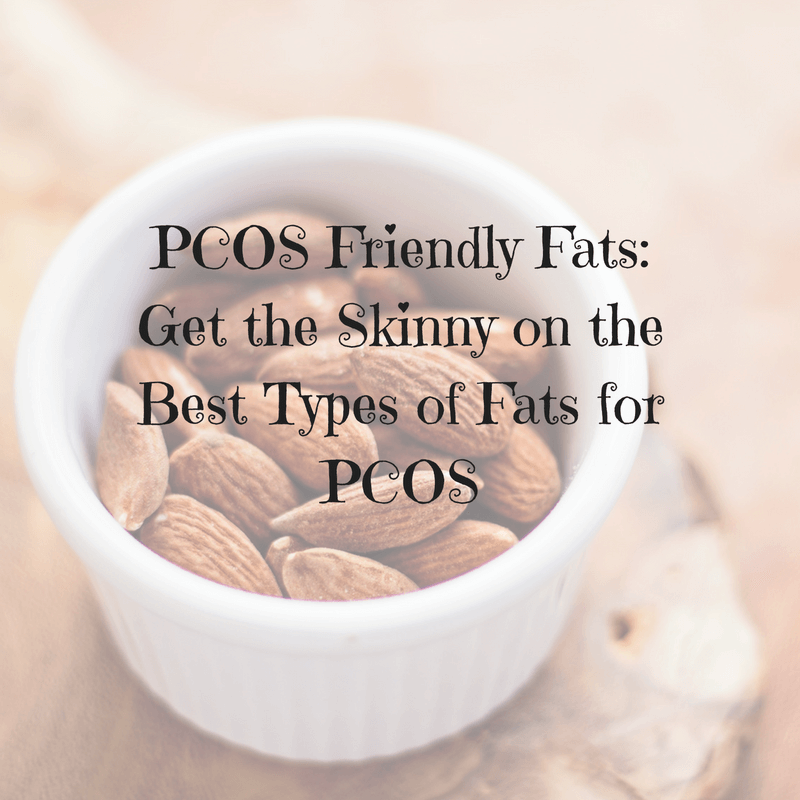
by AmyPlano | Oct 28, 2016 | General information about PCOS, PCOS and Fats, PCOS friendly recipes, PCOS snacks
PCOS Friendly Fats
Did you know that there was such a thing as PCOS friendly fats? Well, if you didn’t thank goodness you landed on my page! I am so happy to have YOU!
There is no denying that fat should be an integral part of any women’s diet. But this is especially true for the diets of women with PCOS. For these amazing women, eating fat (and the right type!) is actual critical to their overall health. There are SO many ways dietary fats are beneficial. Where the heck do I even begin!?!
Number one, they give your body with energy to support cell growth. They also help protect your organs and help keep your body warm. Fats also help your body absorb vitamins, mineral and important nutrients. They also form the backbone of your sex hormones. This last part is especially important, as we know PCOS is a disorder marked by imbalances in hormones. If women don’t take in enough fat then they don’t have the natural resources to correct these imbalances.
Not to mention – fats made us feel FULL! And who does not want to feel full? Fats are such an important part of our diet – yet many women with PCOS tend to shy away from them. And the plot thickens ….

Did you know that women with PCOS are twice as likely to suffer from atherosclerosis than women without syndrome? Yup. This is because many women with PCOS, by nature of the disorder, have several inherent risk factors for heart disease. Many women with PCOS present with central adiposity (excess weight in the belly area), high blood pressure, high triglycerides and low ‘good’ cholesterol levels. All of these risks significantly raise their risk heart disease and stroke.
SO I know what you are probably thinking …

Believe me on this one, cysta!
The simple answer – “Absolutely!” But fret not, the PCOS dietitian is here to give you the skinny on the best types of fats to include in your diet. But I will warn you – the explanation is anything but simple. You see, it critical to note that not all fats are created equal. Some are better for us than others. But even saying that is oversimplifying fats. The quality of fats are dictated by where they come from, how they are processed, raised or prepared as well as additives or preservatives it may contain. All these variables come into play when we considering whether a fat “good” for us or not. In future blogs we tackle the types of fats you should avoid – but onward to the good stuff!
PCOS Friendly Fats
Monounsaturated fats (MUFAs)
Let me count the ways I love monounsaturated fats (MUFAs)! MUFA’s can have a beneficial effect on your heart by optimizing your cholesterol levels. One of the ways that MUFAs do this is that they help lower the “bad” types of cholesterol (LDL) in the blood and while increasing the “good” (HDL) kind.
Tip: When trying to figure out the two cholesterol levels remember it this way: LDL is your lousy cholesterol and you want this level LOW, while HDL is the healthy cholesterol and you want these levels HIGH.
By optimizing these two values you can lower your risk of heart disease and stroke. Furthermore, research supports that MUFAs may also benefit insulin levels and blood sugar control, which can be especially helpful for women with PCOS. Trifecta! Talk about being a PCOS friendly fat! Monounsaturated fats also offer nutrients to help with cell development and provide a good source of vitamin E in the diet. Where can you get your hands on these lovelys? The PCOS Dietitian would not leave you hanging!
Examples of Monounsaturated fats
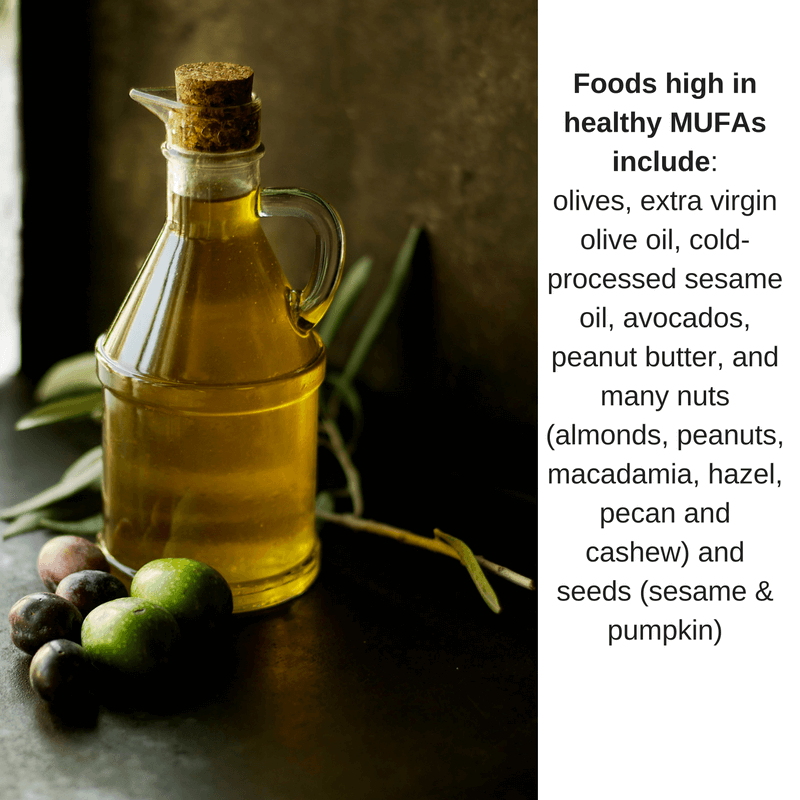
Foods high in healthy MUFAs include: olives, extra virgin olive oil, cold-processed sesame oil, avocados, peanut butter, and many nuts (almonds, peanuts, macadamia, hazel, pecan and cashew) and seeds (sesame & pumpkin)
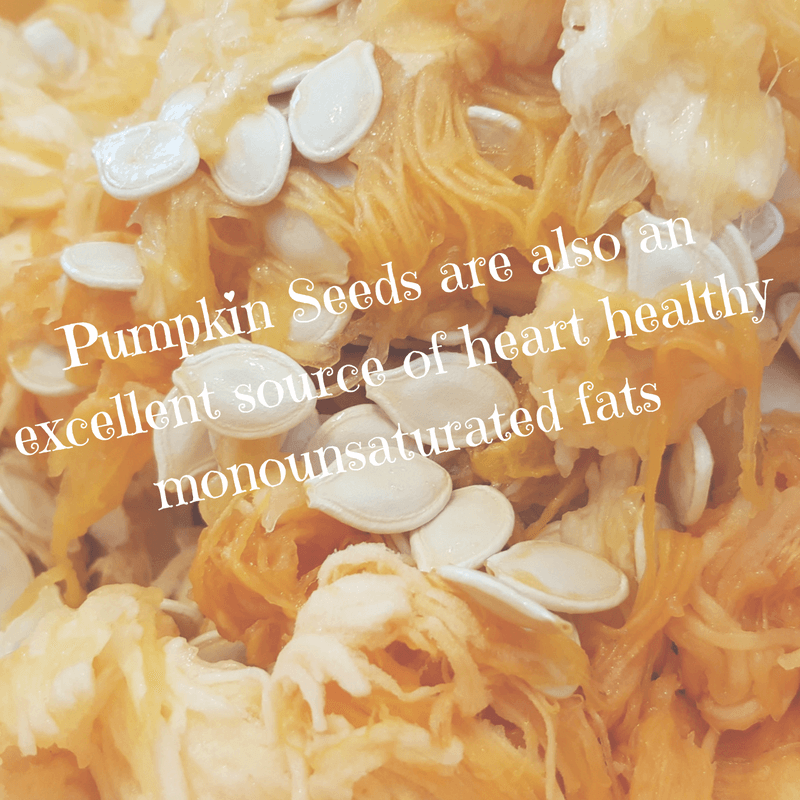
But when speaking of the good – there is always an exception to the rule – Refined Monounsaturated Fats
Canola oil, peanut oil and safflower oil are also monounsaturated fats. However, they are what I would consider modern refined processed oils. The majority of these crops are grown from genetically modified seeds. The oils are treated with high heat and toxic solvents. The processing increases the shelf life of the oils and removes most of the natural flavoring, making them more attractive for the industrial food industry. Please limit your intake of these types of oils as much as possible.
Buying tip: Most olive oils are actually blends of several oils including vegetable oils. Therefore, when buying olive oil look for the California Olive Oil Council (COOC) logo. For Italian olive oils look for (DOP), Spanish (DO) and ones from France (AOC) to make sure it is authentic.
How Much Do You Need of Monounsaturated Fats?
No need to go krazy! All fats, including monounsaturated fats, are high in calories, so use MUFAs only relative to your personalized daily fat requirements. Consume MUFA-rich foods instead of other fatty foods, NOT in addition to them! The goal for your overall fat intake should be around 25-35 % of your total calories. Monounsaturated and polyunsaturated should make up the bulk of this.
Polyunsaturated fats (PUFAs)
Well, I have to say, I have just as much love for PUFAs as I do for MUFAs. When you pour your favorite cooking oil into a pan, there’s a good chance you’re using a polyunsaturated fat. Polyunsaturated fats are used to build cell membranes and line the covering of nerves. They are needed for blood clotting, muscle movement, and for controlling inflammation. Studies support that eating polyunsaturated fats in place of saturated fats or highly refined carbohydrates reduces harmful LDL cholesterol and has a positive effect on the cholesterol profile. They can also help lower triglycerides.
Examples of Polyunsaturated fats
Examples of foods high in polyunsaturated fats include: walnuts, sunflower seeds, organic tofu, soybeans, and fatty fish such as salmon, mackerel, herring, and trout.

Note – just like the monounsaturated oils – canola, safflower and peanut oil – soybean oil, corn oil, sunflower oil also fall under the same ill as those modernized processed oils. They too are highly processed oils that go through an insane amount of processing with chemical solvents, steamers, neutralizers, de-waxers, bleach and deodorizers before they end up in the bottle. So please, when possible reduce their use in your cooking and limit your general consumption of foods that contain them.
Omega 3 Fatty Acids – Superstars
But on a much more positive note, I bet you have heard of the superstar Omega 3 fatty acids! Omega 3 fatty acids are essential fats the body cannot produce. Therefore, we need to consume these guys in the diet.
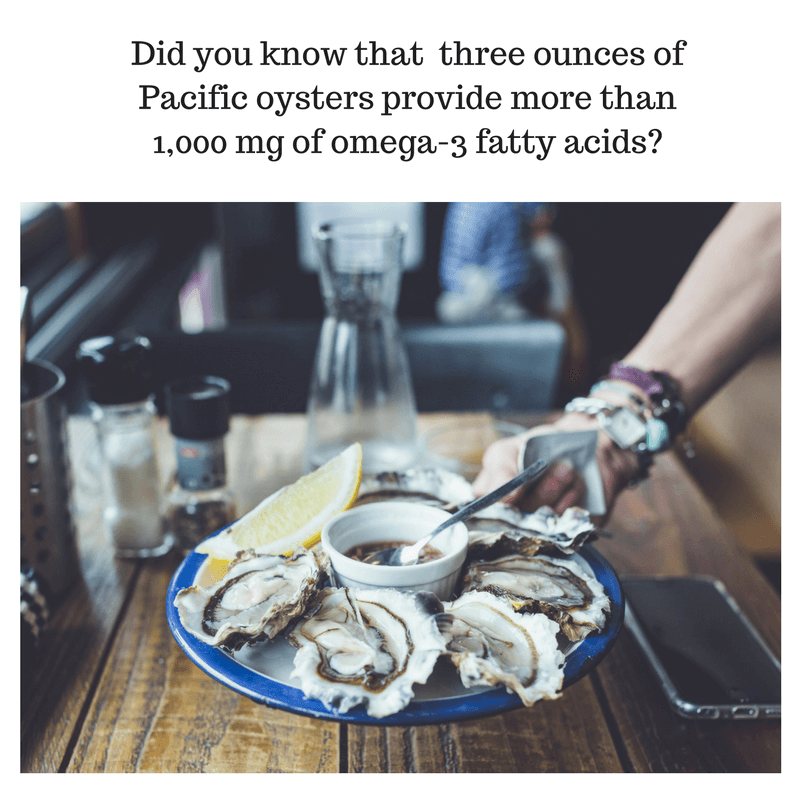
Did you know that there are three different types of omega 3 fatty acids? The three types are DHA, EPA & AHA. DHA and EPA are the preferrable form and are found in foods like cold-water fish and algae. While ALA is found more in plant foods such as nuts and seeds, as well as in grass-fed beef.
The Benefits of Omega 3 Fatty Acids
The benefits of omega 3 fatty acids are seemingly endless! When consumed in right amounts they are known to help with everything from promoting a healthy pregnancy, to decreasing the risks for depression, dementia and even memory loss. Inflammation in the body can damage your blood vessels and lead to heart disease and stroke. Omega-3 fatty acids may decrease triglycerides, lower blood pressure slightly, reduce blood clotting, decrease stroke and heart failure risk and reduce irregular heartbeats. Not too shabby, right?
Examples of Foods Containing Omega 3 Fatty Acids
Foods that are high in omega 3’s include salmon (wild caught & sockeye), herring, mackerel, anchovies, oysters, sardines, pole & line caught tuna and lake trout. Vegetarian sources include algae (seaweed) walnuts and flax.
Buying tip: Polyunsaturated fats are much more vulnerable than monounsaturated fats. PUFAs are sensitive to light, air and sunlight. Therefore, keep foods high in PUFA’s away from direct light and when permissive keep in the refrigerator to prevent them from going rancid.
How Much Do You Need of Polyunsaturated Fats?
As important as PUFAs are there is no set requirement. However, the American Heart Association recommends eating at least 6 ounces of cold-water fish twice per week. If you do not like fish or feel like you are falling short on your intake, you may want to talk to your physician about a supplement. It’s especially important to consult your health care provider if you are pregnant or breastfeeding, if you take medicine that affects blood clotting, if you are allergic to seafood, or if you are considering giving a child an omega-3 supplement.
Still stumped on how to get more PCOS friendly fats in your diet? Let the PCOS Dietitian give you some fun and fresh ideas.
Five Ways to Incorporate More PCOS Friendly Fats Into Your Diet
1. Go nuts!
Snack on nuts instead of salty, carb-laden pretzels and chips. Nuts are a great source of heart healthy fats, super tasty and even come in single serving bags. Just make sure to keep your serving to around ¼ cup which equals around 180 calories, 14 grams of fat (almost all mono & polyunsaturated!), 6 grams of protein and 6 grams of carbohydrates.
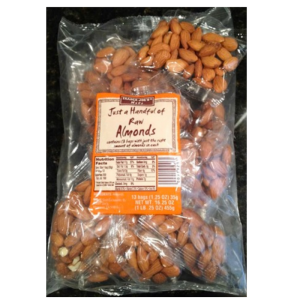
Tip: Trader Joes sells pre-portioned almonds and cashews called ‘Just a Handful of Almonds.” If you are looking for something with a bit more spice and kick the Emerald brand sells 100-calorie packs of flavored cashews, almonds and walnuts. The flavors range from Siracha, to jalapeño to chocolate and cinnamon. These are great to throw in your car, desk drawer or car. They travel extremely well.
2. Become Sandwich Savvy
Replace your cheese and/or mayonnaise on your sandwich with sliced avocado or even guacamole. This quick little swap decreases your intake of unhealthy fats while boosting your intake of monounsaturated fats. It also adds a whole new dimension to your ho-hum lunch!
Tip: It seems like it always so hard to get avocados ‘just right.’ They always seem to be too hard or too ripe. Just a quick tip if they are green and unripe is to put them in a brown bag (just like you would other fruits!) and that will speed the ripening process. On the flip side, if you have an avocado on the counter that looks perfect – but you are not ready to use it – throw it in the fridge. This will halt the ripening process.
3. Nut Butters
Nut butters – need I say more?!? I sometimes wish nut butters were a food group. If they were I would be SO in love!

Nowadays you can get almost every nut in spreadable form. Gone are the days when you could just get peanut butter. Now you can get cashew, almond, and hazelnut butters and my personal favorite – sunflower seed butter! Spread any of these heart healthy butters on celery, apples, bananas or even swirl into your morning oatmeal. But just like any fat be mindful that each tablespoon of nut butter packs a whopping 100 calories and 6 grams of fat. Yes, it is healthy fat – but next thing you know that “little” bit of peanut turned into half the jar. Sounds familiar?
Tip: When buying peanut butter always go organic! The crops are heavily sprayed and no one needs all those chemicals in their body. Also brands such a Skippy & Jiff (unless they state they are “natural”) contain hydrogenated fats – so don’t touch those bad boys with a ten-foot pole.
4. Cha-Cha-Cha-Chia
Discover the magic of chia seeds. Chia seeds are loaded with fiber, calcium, antioxidants and Omega 3’s. They are a true super food. You can pretty much buy them in any grocery store including the obvious ones like Trader Joes and Whole Foods. A small bag goes for around $6 – $8 depending upon the brand. A small bag supplies well over 40 servings!
You can sprinkle on your yogurt, blend into your smoothies or make some killer chia pudding! See my recipe below for this tasty treat.
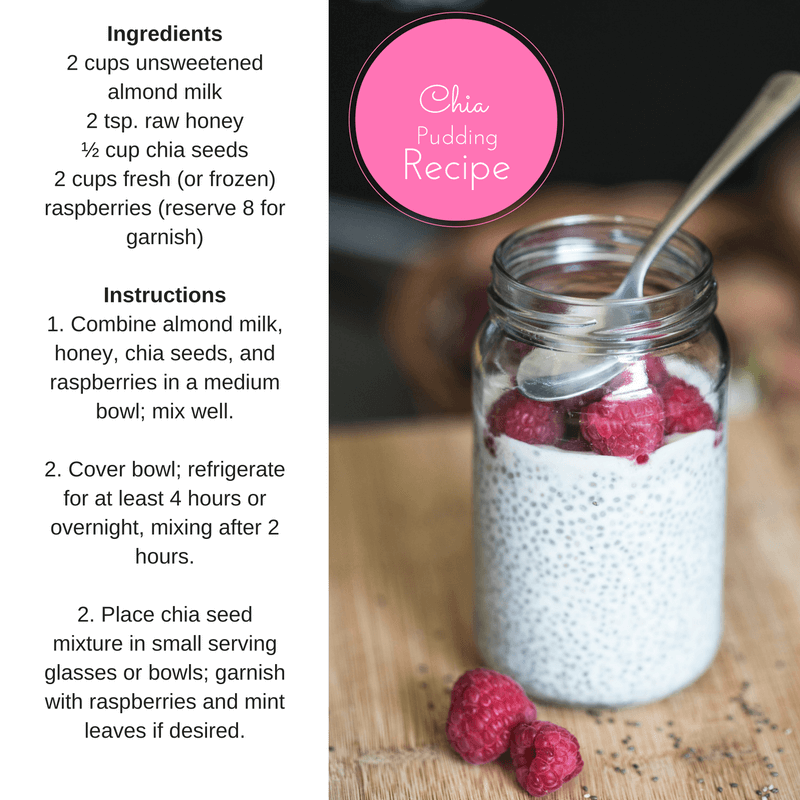
Tip: Remember what we said about polyunsaturated fats like Omega 3’s? They are vulnerable to oxidation. Storing them in the refrigerator will extend their shelf life. However, most chia seeds come in special vacuum-sealed packaging. These packages can be stored at room temperature until they are opened. Once opened, throw the whole bag in the fridge to maintain their freshness.
5. Make your own salad dressings
Making your own salad dressing is SO easy! Once you start doing this – you will be ashamed you ever bought the crap in a bottle. Plus, it a terrific way to get your PCOS friendly fats in AND your greens.
I urge you experiment with different types of oils when making your dressings. Have you tried avocado oil? It is a super mild oil that blends nicely with various vinegars, acids such as lemon and lime. How about walnut oil? It pairs awesome with balsamic and maple syrup. Check out the recipes below. You can always tweak the ingredients to suit your palate!
Avocado Vinaigrette
Ingredients:
3 tablespoon Avocado Oil
1 tablespoon Apple Cider Vinegar
1/2 clove Garlic, grated or crushed
Zest of 1/2 Lemon
1/4 teaspoon salt
1/4 teaspoon back pepper
For the Vinaigrette:
Whisk all ingredients in a small bowl. Top off your favorite bowl of salad greens!
Lighten-Up Lemon Walnut Salad Dressing
Ingredients:
1/4 cup red wine vinegar
2 tablespoons minced shallots (onions will work, too!)
2 tablespoons walnut oil
1 tablespoons REAL maple syrup (you can adjust up or down depending upon how sweet you like it!)
1 tablespoon fresh lemon juice
1/2 teaspoon salt
1/4 teaspoon freshly ground black pepper
Preparation
Combine all ingredients, stirring with a whisk. Store in refrigerator for up to 1 week. A mason jar is a great storage vehicle.
Phew that was a lot of info! Hopefully I have convinced you of all the awesome benefits of including PCOS friendly fats in your diet. Rather than shy away from, you know have the important tools to make the most educated decisions when it comes to which fats to choose to support your PCOS. But as always I would love to hear your thoughts. What are some of your favorite MUFAs and PUFAs? What are your strategies for fitting them in your diet? Tell us in the comments below!


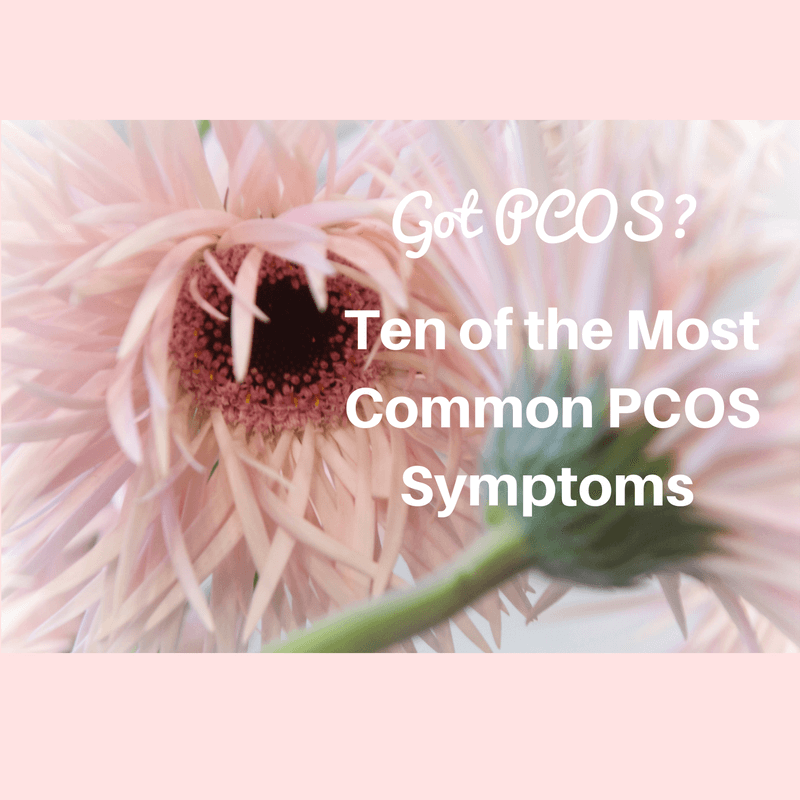
by AmyPlano | Oct 10, 2016 | General information about PCOS
Got PCOS? Ten of the Most Common PCOS Symptoms: What to Watch Out For
Being able to identifythe common PCOS symptoms is SO very critical for receiving an effective diagnosis. Without a proper diagnosis, a women with PCOS cannot receive the proper medical treatment. Yet, so many women experience a myriad of PCOS symptoms but never report them to their medical providers. Did you know PCOS is the most prevalent hormone imbalance in women under the age of 50? Yet nearly 70% of all cases are undiagnosed. The statistics are astounding! Furthermore, one out every fifteen women worldwide struggles with PCOS. This is especially relevant because if left untreated, PCOS can lead to more far reaching health concerns, such as diabetes, heart disease and endometrial cancer.
Most women with PCOS primary health issues stem from an overabundance of androgens (male hormones) and insulin resistance. Classic PCOS symptoms include: infertility, irregular menstrual cycles, excessive hair growth and elevated weight. Even though the name of the syndrome is Polycystic Ovarian Syndrome – it is possible to have PCOS WITHOUT having cysts in your ovaries. So don’t freak out if you don’t have ovarian cysts and are still diagnosed with the syndrome.
Symptoms of PCOS may begin shortly after puberty. Some of the signs and symptoms can be attributed to other causes or go unnoticed, which makes diagnosing PCOS difficult. Below are some of the most common symptoms of PCOS. Please be mindful that this list is by no means all-inclusive. Due to the fact that PCOS is disorder of hormonal imbalance – symptoms vary tremendously from women to women.
Ten of the Most Common PCOS Symptoms
1. Irregular periods. This is the most common characteristic of PCOS. This can include having irregular menstrual intervals or having prolonged menses that are either scant or super heavy.
2. Excess androgen levels. Elevated levels of male hormones called androgens is a classic symptom of PCOS and can lead to problems with weight, excessive hair growth, acne, and baldness.
3. Polycystic ovaries. Women with PCOS may or may not have cysts on their ovaries. The cysts associated with PCOS are actually eggs that do not get released from the ovary because of abnormal hormone levels.
4. Issues with weight gain. About half of women with PCOS struggle with weight gain and obesity. Many women have difficulty losing weight despite making dietary changes.
5. Unwanted hair growth. Women with PCOS may experience excessive hair growth on their face, arms, back, chest, thumbs, toes, and abdomen as a result of hormonal changes.
6. Acne. Hormonal changes can also lead to issues with acne or other skin issues such as skin tags or darkened patches of skin.
7. Fatigue and sleep problems. Many women with PCOS have lower energy levels and issues with poor sleep.
8. Thinning hair on head. This symptom may be more noticeable during middle age.
9. Infertility. PCOS is one of the leading causes of infertility.
10. Headaches and mood changes. Hormonal changes can prompt headaches and increase the likelihood of mood swings, depression, and anxiety.
Take Action!
In concPlease, please, please promise me if you have any of these symptoms that you will be super proactive with your health! You are important girl friend and deserve the proper treatment. Many women who experience the symptoms of PCOS suffer silently. They are often too embarrassed, or feel the symptoms could be perceived as an awkward phase of sexual development, reactions to stress or poor lifestyle choices, or even false concerns with a less-than-perfect body. Therefore, rather than speak up and express their concern they chock them up to “female problems.” And as a result, are unable to get the appropriate diagnosis and treatment plan.
Yes, they are female problems – but they are important female problems that need your direct attention and those who help keep you healthy (doctors!) Under no circumstances should you have to suffer. If your regular OBGYN will not listen and address your concerns – then seek someone out who will. Monitor and document any changes to your appearance (especially your skin and hair), as well as any unexplained weight gain and menstrual irregularity. Collect data and never ever give up.
I have seen far too many women struggle for far too long in my practice. It absolutely blows my mind when patients come to see me and have a myriad of undeniable PCOS-related symptoms and NOT ONE of their doctors has done one thing aside from tell them to “exercise more and lose weight”. If only it was that easy! Geez!

Having PCOS should not define you, but a proper diagnosis is necessary to define your treatment plan.
In conclusion, you need to be proactive with your health and report all the symptoms of PCOS you may be experiencing. I do my best to keep you informed about what you should be doing from a dietary standpoint – but sometimes that just not enough. You need to be heard and something needs to be done to help you with these symptoms. And please remember … it is not you – it is your body!
Do these symptoms sound familiar? Have you or someone you know been suffering with these symptoms and no one in the medical field seems willing to listen, understand and help do something about them? Please share your frustrating experiences with the medical community in the comments below. I think so many women can benefit from hearing your story! Now is the time to vent. We are listening and have your back.































